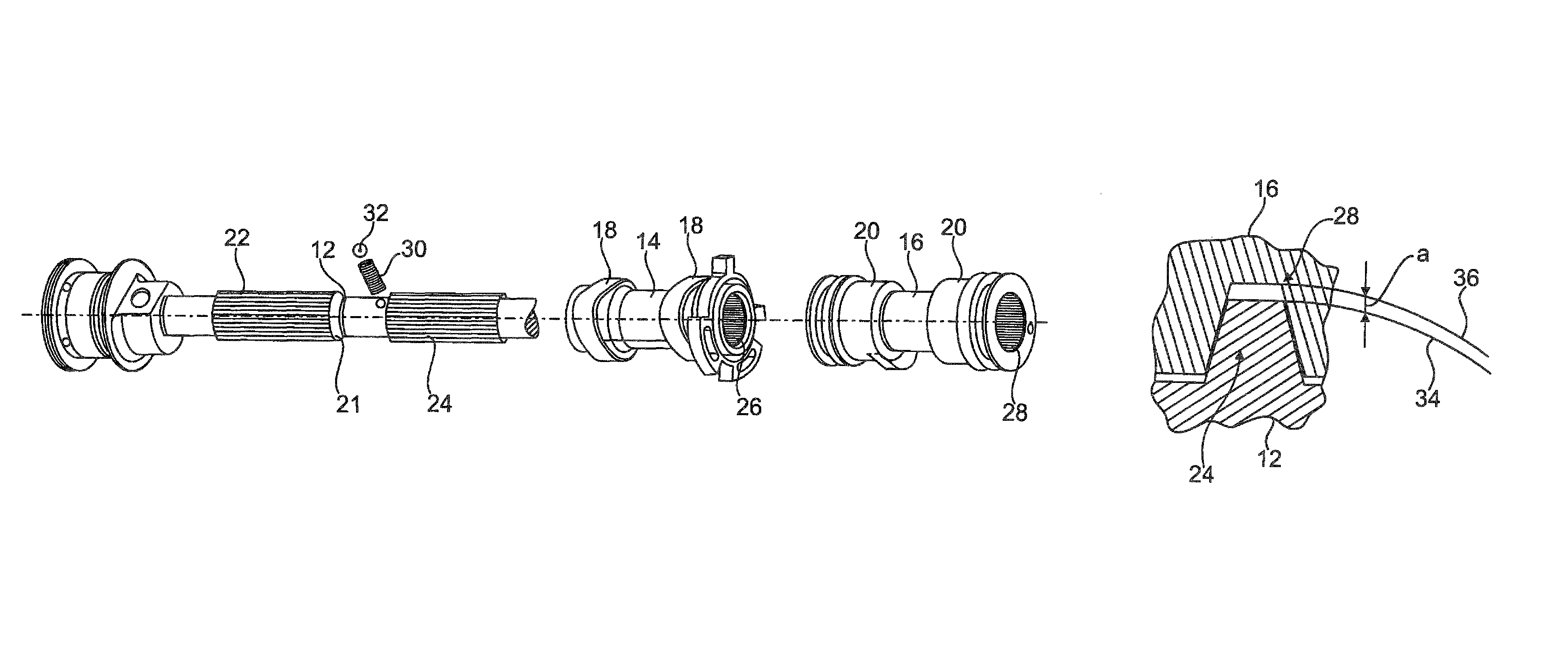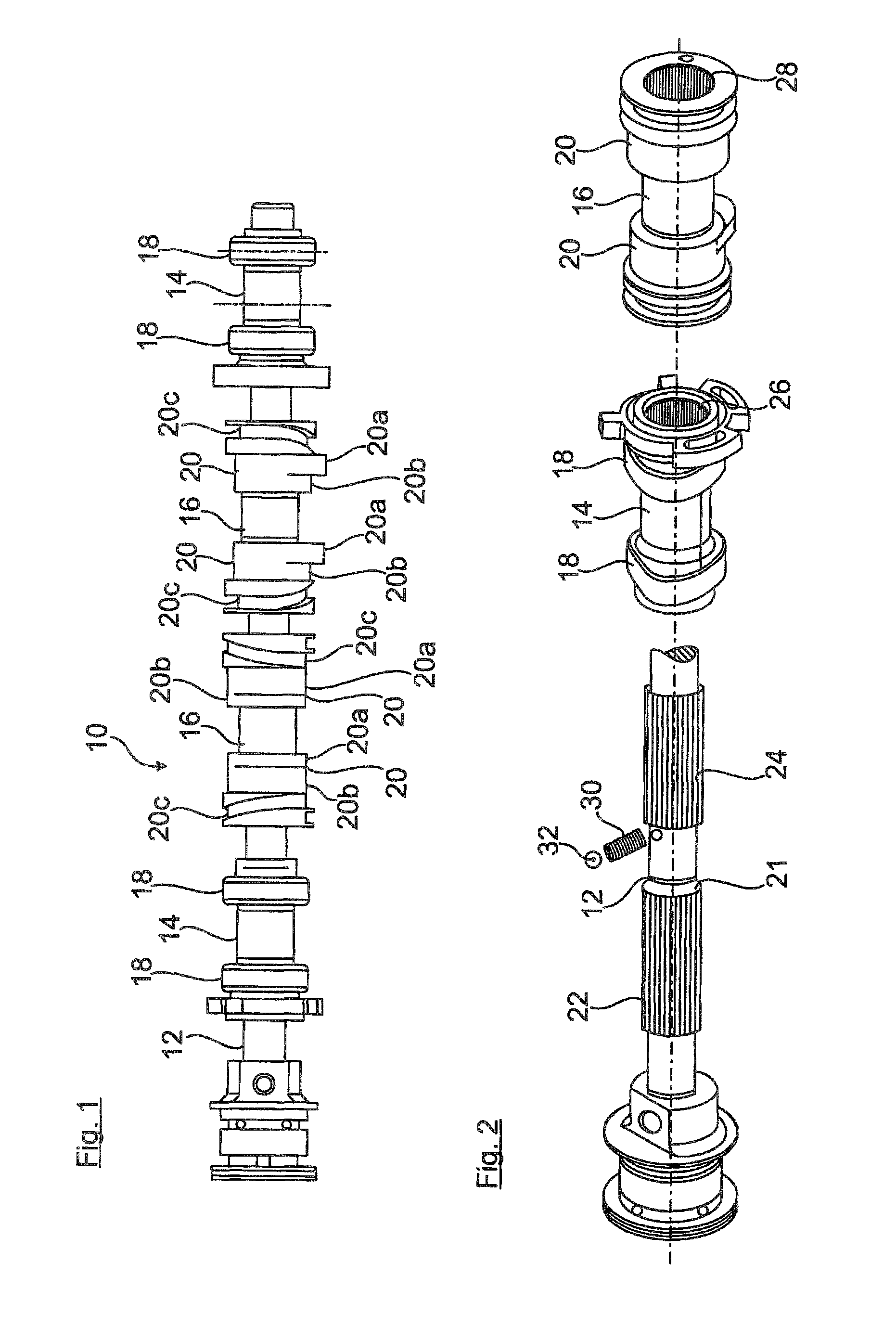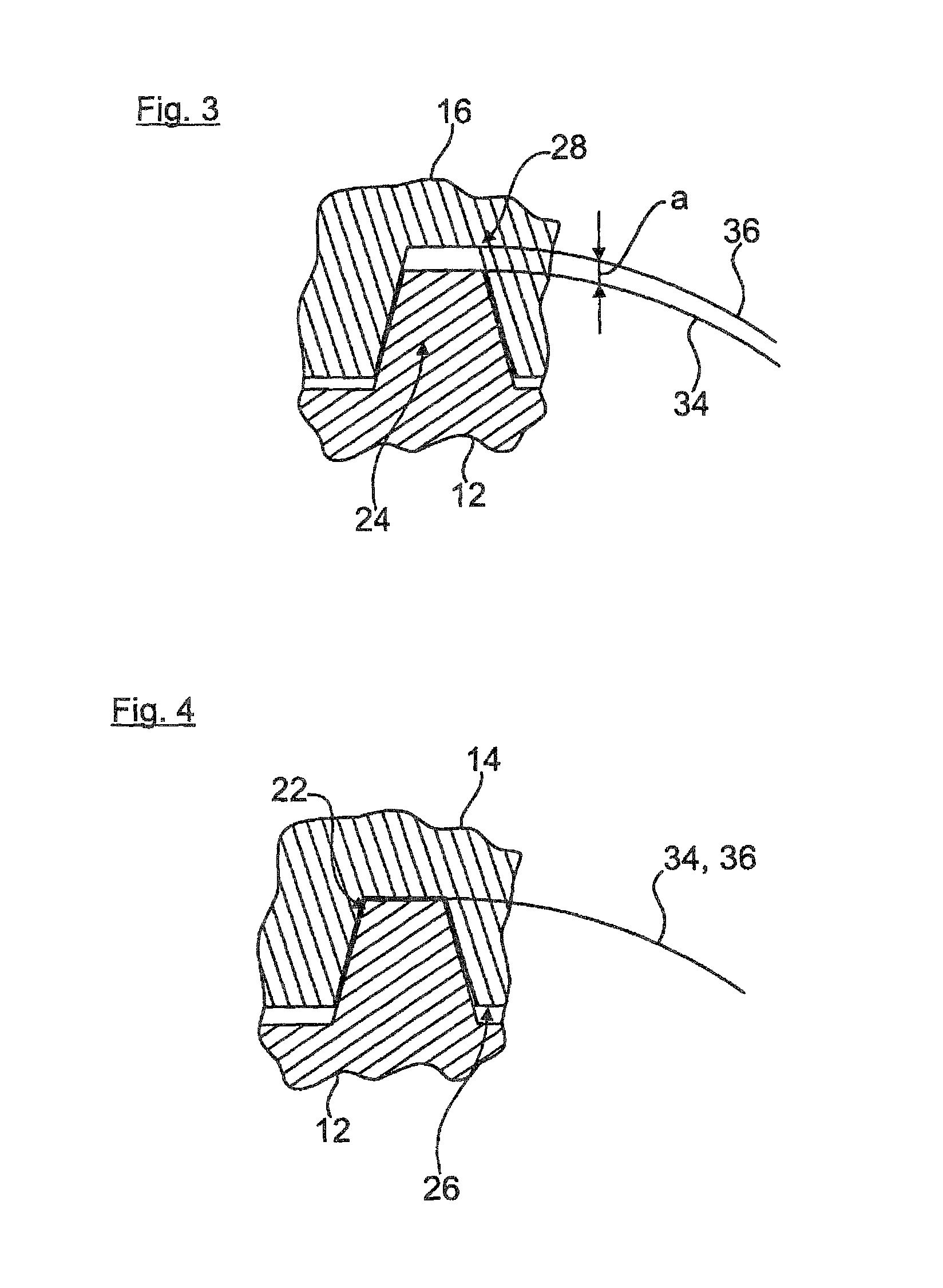Assembled shaft element, particularly assembled camshaft for valve-controlled internal combustion engines
a technology of internal combustion engine and camshaft, which is applied in the direction of machines/engines, valve drives, couplings, etc., can solve the problems of reducing the transmittable torque, affecting the formfit and/or force fit between the shaft and the hub body, and significant noise emissions during engine operation. , to achieve the effect of simple assembly, reliable avoiding unwanted noise emission, and simple structur
- Summary
- Abstract
- Description
- Claims
- Application Information
AI Technical Summary
Benefits of technology
Problems solved by technology
Method used
Image
Examples
Embodiment Construction
[0020]FIG. 1 shows a camshaft 10 for an internal combustion engine with partial cylinder shut down which substantially includes an inner shaft 12 which can be driven by a drive gear (for example chain wheel, not shown) and on which i.a. four cam pairs 18, 20 are arranged which are formed on hub bodies 14, 16. The camshaft 10 is described only to the extent necessary for the understanding of the present invention.
[0021]The cam pairs 18 on the hub bodies 14 are simple fixed cams, each operating a poppet valve of the valve train of the internal combustion engine.
[0022]The middle cam pairs 20 are switch cams which are fixed on the hub bodies 16 and respectively have a cam contour 20a and a circular symmetrical contour 20b matching the cam base circle. Further, sliding guides 20c are assigned adjacent to the cam pairs 20 for allowing the cam pairs 20 with the hub bodies 16 to move axially. A switch pin which is not shown engages hereby alternatingly into one or the other sliding guide 20...
PUM
| Property | Measurement | Unit |
|---|---|---|
| diameter | aaaaa | aaaaa |
| operating torque | aaaaa | aaaaa |
| dimension | aaaaa | aaaaa |
Abstract
Description
Claims
Application Information
 Login to View More
Login to View More - R&D
- Intellectual Property
- Life Sciences
- Materials
- Tech Scout
- Unparalleled Data Quality
- Higher Quality Content
- 60% Fewer Hallucinations
Browse by: Latest US Patents, China's latest patents, Technical Efficacy Thesaurus, Application Domain, Technology Topic, Popular Technical Reports.
© 2025 PatSnap. All rights reserved.Legal|Privacy policy|Modern Slavery Act Transparency Statement|Sitemap|About US| Contact US: help@patsnap.com



